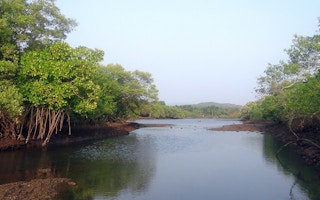When Cyclone Amphan came barrelling up the Bay of Bengal this past May, South Asia’s first named storm of the year appeared to pose a massive threat to the people who live on the coastal floodplains and to the animals and plants – including many endangered species – that rely on these sensitive ecosystems. But nature came to the region’s rescue.
The Sundarbans, the world’s largest mangrove forest, offered better protection than any man-made storm wall could have done. When Amphan’s 16-foot storm surge slammed into this 4,000-square-mile national park, the mangroves took the teeth out of it, just as they did with the two other supercharged cyclones, Aila and Sidr, that have made landfall in recent times.
“
As we look to rebuild the global economy following the Covid-19 crisis, conserving our remaining natural assets must be a top priority.
On the other side of the world, natural storm defenses on the lower end of Manhattan have long since been paved over. Real-estate developers have even extended the island into New York Harbor with acres of landfill, neglecting to build up storm surge protections.
As a result, when Hurricane Irene and Superstorm Sandy hammered the city in 2011 and 2012, respectively, lower Manhattan, including the city’s financial district, was inundated.
City planners have since been working with the US government to plan for the next wave of superstorms. But the price tag of the infrastructure needed – a retractable wall across New York Harbor costing at least $62 billion – has prevented any plans from being finalised.
As we look to rebuild the global economy following the Covid-19 crisis, conserving our remaining natural assets must be a top priority.
If we don’t act, we risk losing the plants, animals, and microorganisms needed to keep our air clean, our water pure, and our food supplies plentiful – not to mention the mangrove forests and barrier reefs that stand between us and the superstorms that are becoming more frequent as a result of climate change.
The world has become less wild as we have built and expanded cities, cut down forests for crops and livestock, drained wetlands for roads, and flooded valleys for dams. The economic cost of this ecological damage goes mostly uncounted. But it is prohibitively high, eroding the value of goods and services that nature produces. One million species are now at risk of extinction.
Fortunately, there is a relatively simple initiative underway to curb some of these losses and solve our looming conservation crises. Under the heading of “30x30,” it aims to protect 30 per cent of our planet’s land and oceans by 2030 through effective, permanent measures. More than 20 member states in the United Nations Convention on Biodiversity have already committed to supporting this global target.
According to a new report authored by more than 100 scientists and economists from around the world, expanding existing protected areas to 30 per cent of the planet would add $250 billion to annual global economic output, on average. (The report estimates a range of $64-454 billion, as the costs and benefits will vary depending on which areas are protected.)
Moreover, the study finds that protected areas and the nature-based activities they support are among the world’s fastest-growing economic sectors, with 4-6 per cent projected annual revenue growth, compared to less than 1 per cent in agriculture, and negative growth in fisheries.
For countries with large areas of forest and mangroves, embracing 30x30 would prevent the loss of an average of $350 billion ($170-534 billion) annually in ecosystem services.
These costs stem largely from flooding, soil loss, storm surges, and the release of stored carbon that occurs when natural vegetation is destroyed. By protecting India and Bangladesh over the years, the Sundarbans have provided an extraordinarily valuable service.
Conversely, the environmental destruction in the Brazilian portion of the Amazon rainforest has resulted in major, far-reaching losses. Even the drinking water shortages that afflict São Paulo, the largest city in the Americas, are directly connected to Amazon deforestation.
As governments contemplate how to re-open their economies after the Covid-19 lockdown, they must accommodate the need for greater conservation and restoration of natural resources. Every tropical storm that is strong enough to be named should serve as a reminder of what is at stake if we do nothing. With recent forecasts of an “above-normal 2020 Atlantic hurricane season,” the US east coast should already be bracing itself.
India and Bangladesh are fortunate to have the Sundarbans. But no country in the world lacks natural areas that are worth conserving or restoring. Not only is it critical for all countries to adopt the 30x30 target, but each should also look for ways to invest more in its natural areas.
By doing so now, governments can ensure that nature-based sectors and ecosystem services will recover at the same pace as the rest of the economy. There’s no better time to start than before another storm strikes.
Robert Watson is Chair of the Intergovernmental Science-Policy Platform on Biodiversity and Ecosystem Services (IPBES).
Copyright: Project Syndicate, 2020.
www.project-syndicate.org









